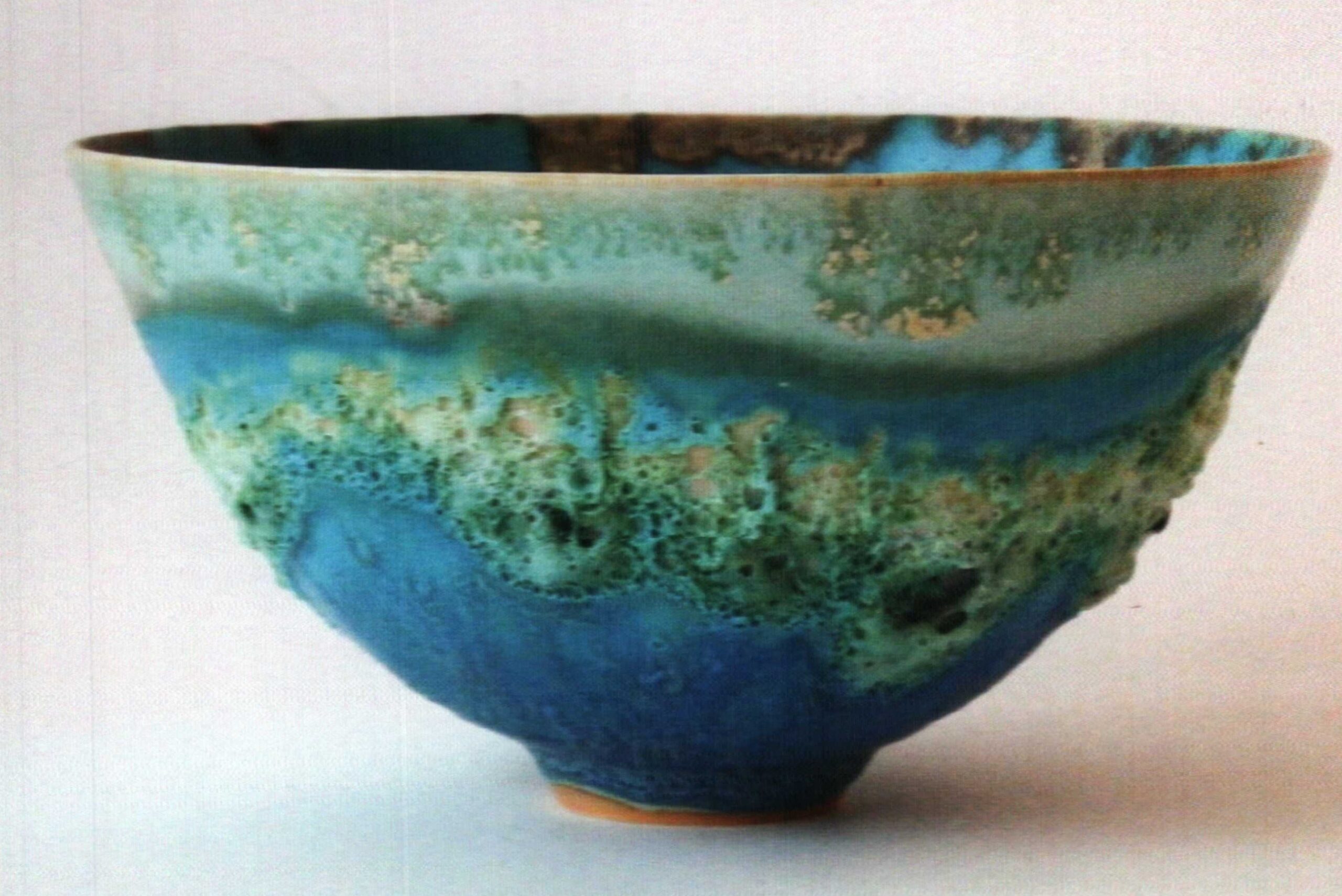

Whilst researching my dissertation proposal I discovered the work of Jan Lewin Cadogan, she makes forms decorated with barium and lava glazes, however these glazes are fired in oxidisation, and I wanted to use a reduction celadon glaze as a base on which to apply the silicon carbide crater glaze. I researched to see if it was possible to create a crater glaze in a reduction firing, however I could not find any information concerning this, I contacted Jan for information, she was extremely helpful and I now have a plan to test barium glazes referencing test boards outside the Uni glaze room and Jan’s silicon carbide recipe published in Linda Bloomfield’s book, “Science for Potters”. I made two barium based glazes and a silicon carbide crater glaze ready to apply to the moon jar that is being bisque fired. I will apply these to test their behaviour on the moon jar this coming week.

I had tutorials with Matt and Duncan this week after researching Silicon Carbide glazes to create a moon jar mimetic of the moon’s surface, Matt informed me of the test board of barium based glazes outside of the glaze room; I think that these glazes, together with a silicon carbide crater glaze may meet my creative intention for a mimetic moon jar surface.
2 Barium Based base glazes: 1 part and 5 part Copper Carbonate
Cone 9 in Oxidation
| Material | Quantity | |
| Nepheline Syenite | 20 | |
| Barium Carbonate | 40 | |
| Lithium Carbonate | 4 | |
| Flint | 10 | |
| China Clay | 19 | |
| Copper Carbonate | 1 | 5 |

From my research I have made 2 barium based glazes, a silicon carbide crater glaze and a Beading glaze for the star field/ flying saucer bowl. I will test these glazes by applying them to the large moon jar which I threw last week

Crater Glaze 1255C.in Oxidation
Material Quantity
Strontium Carbonate 15
Nepheline Syenite 61
China Clay 11
Silica (Quartz) 13
Silicon Carbide


Beading Glaze Cone 10 in Reduction
| Material | Quantity |
| Nepheline Syenite | 55 |
| Magnesium Carbonate | 45 |


